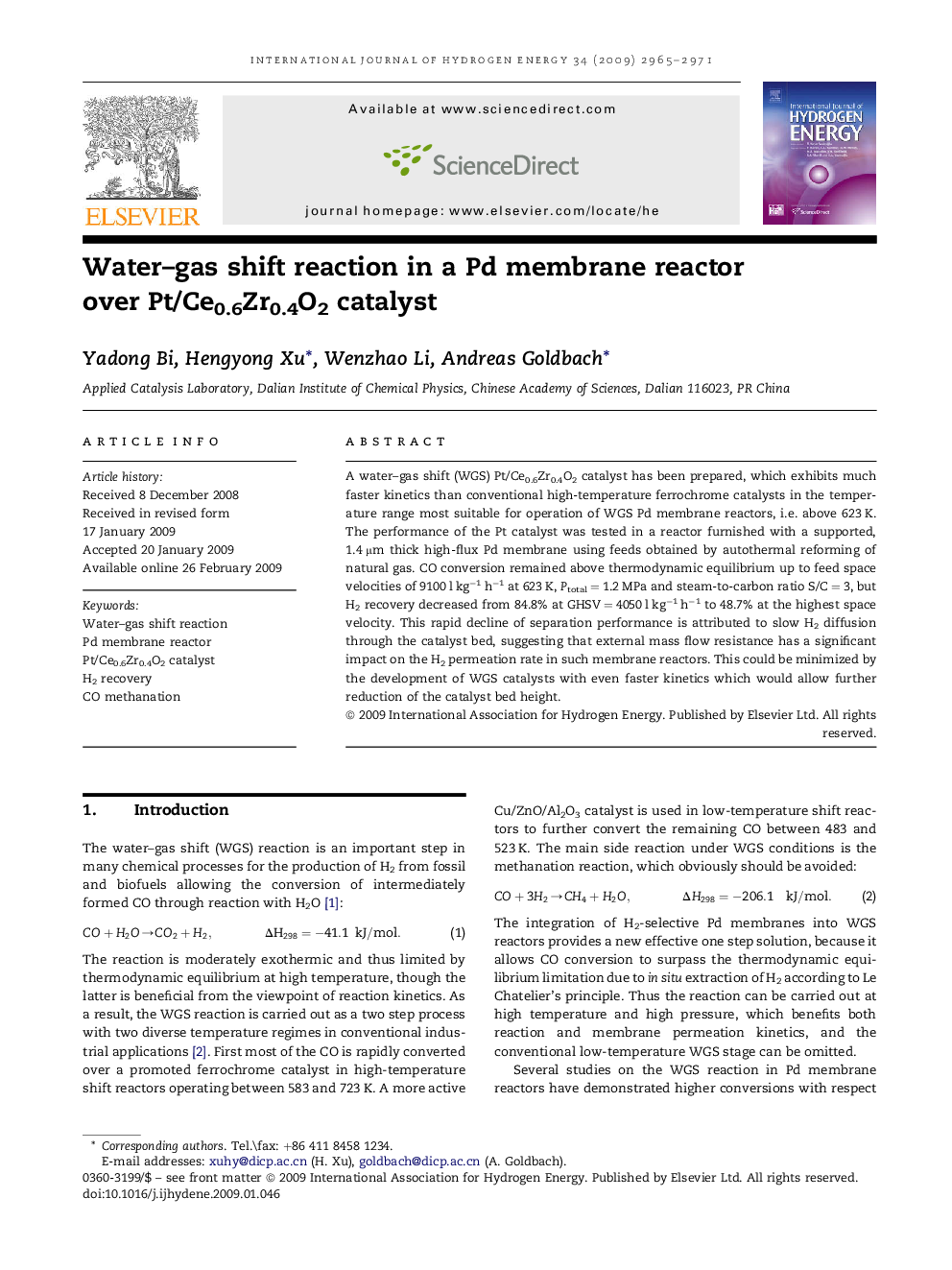| Article ID | Journal | Published Year | Pages | File Type |
|---|---|---|---|---|
| 1283228 | International Journal of Hydrogen Energy | 2009 | 7 Pages |
A water–gas shift (WGS) Pt/Ce0.6Zr0.4O2 catalyst has been prepared, which exhibits much faster kinetics than conventional high-temperature ferrochrome catalysts in the temperature range most suitable for operation of WGS Pd membrane reactors, i.e. above 623 K. The performance of the Pt catalyst was tested in a reactor furnished with a supported, 1.4 μm thick high-flux Pd membrane using feeds obtained by autothermal reforming of natural gas. CO conversion remained above thermodynamic equilibrium up to feed space velocities of 9100 l kg−1 h−1 at 623 K, Ptotal = 1.2 MPa and steam-to-carbon ratio S/C = 3, but H2 recovery decreased from 84.8% at GHSV = 4050 l kg−1 h−1 to 48.7% at the highest space velocity. This rapid decline of separation performance is attributed to slow H2 diffusion through the catalyst bed, suggesting that external mass flow resistance has a significant impact on the H2 permeation rate in such membrane reactors. This could be minimized by the development of WGS catalysts with even faster kinetics which would allow further reduction of the catalyst bed height.
